Just as naturally-occurring bacteria in your mouth can affect your teeth by causing tooth decay, they can also affect your gums by causing gum disease. Gum disease, also known as periodontal disease, is unfortunately highly common. In fact, the Centers for Disease Control and Prevention (CDC) have noted that over 50% of Americans over the age of 30 and 70% of Americans over the age of 65 currently have some form of gum disease.
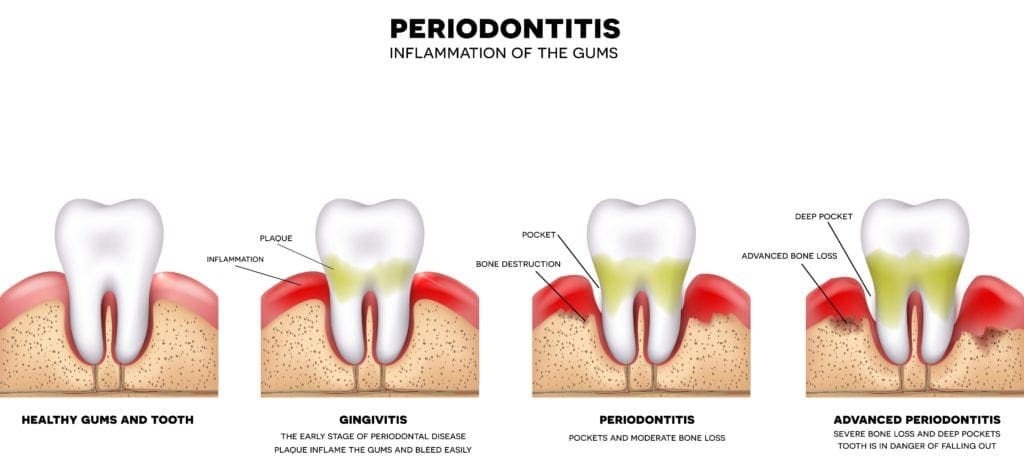
There are two forms of gum disease: gingivitis and periodontitis. Gingivitis is a mild form of gum disease that can usually be reversed with treatment. Periodontitis, on the other hand, is a more severe form of gum disease that cannot be reversed and will continue to progress without treatment. Individuals with periodontitis are encouraged to undergo regular specialized cleanings to manage their periodontitis and prevent it from becoming worse.
The early detection of gum disease increases the likelihood that it can be reversed with treatment. To detect gum disease, here are three common signs to look for:

Healthy gums are a coral pink color, although they may be slightly darker in those with darker skin pigments. Abnormal gums are those that are deep pink, red, swollen, inflamed, or that bleed easily. Contrary to what many believe, your gums are not supposed to bleed when you floss. If your gums appear to be inflamed, discolored, swollen, or bleeding, then you should schedule an appointment with your general dentist immediately.
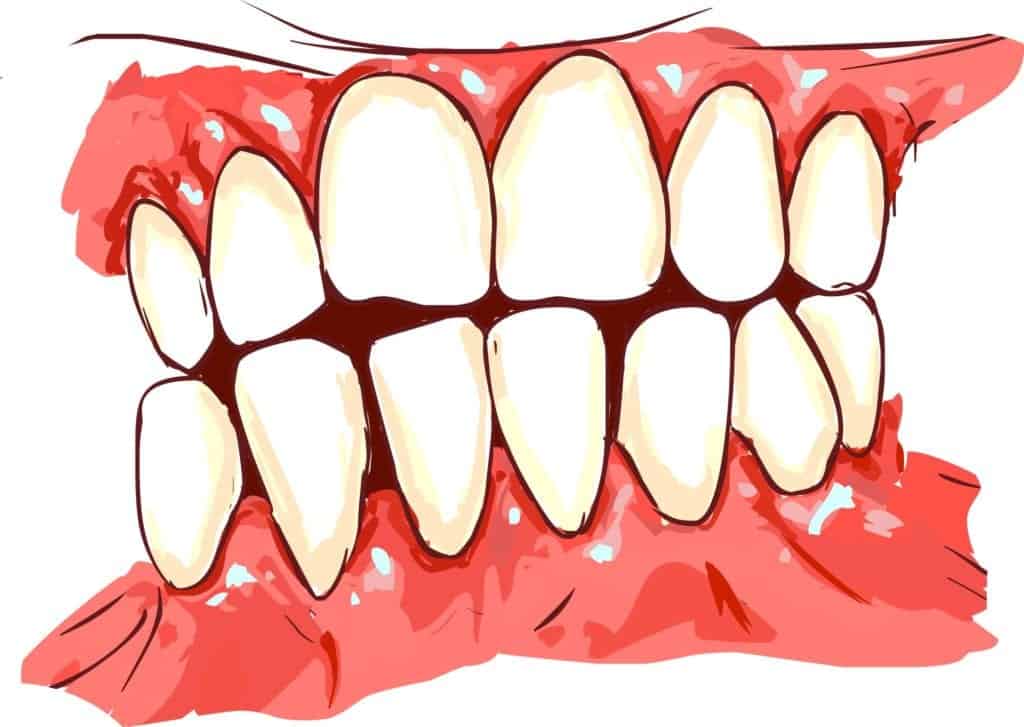

Healthy gums cover the entire tooth root and are firmly attached to the teeth. When bacteria accumulates in the gum pockets, this causes the gums to pull away from the teeth. Receding gums can look loose around the teeth and they make the teeth look larger than usual. This is because when the gums pull away from the teeth, they expose the tooth root. Additionally, severe gum recession can eventually lead to the teeth becoming loose and/or shifting in position. This can result in teeth falling out and/or a misaligned bite.

In most cases, gum disease does not cause pain. This is one reason why it often goes unnoticed until it has advanced. When pain does occur, it is usually the result of extreme inflammation and is felt in the gums or even while chewing. However, pain can also occur in the form of tooth sensitivity. This happens because gum recession causes tooth roots to be exposed. Tooth roots contain a thinner layer of enamel because they are normally protected by the gums. Since they have a thin protective coating, stimuli are more likely to enter the tooth and cause pain.
Being able to identify gum disease through abnormal gum appearance, gum recession, and pain, will enable you to seek dental treatment sooner rather than later. A prompt dental exam and treatment carried out by a general dentist is essential to either reverse or manage periodontal disease. Unfortunately, gum disease is not something you can ignore and it will continue to get worse the longer it persists. If you have noticed any of these three common signs of gum disease, schedule an appointment with your local general dentist.

Dr. Dennis Laurich has been practicing dentistry for over 40 years. He received his DDS degree from the University of Michigan Dental School and regularly attends oral health care conventions to continue his dental education. This allows him to treat patients with the leading dental technology and methodologies. Additionally, he is a member of the American Dental Association, Michigan Dental Association, and the Detroit District Dental Society.
Even though general dentists examine your teeth, gums, and jaw, as well as screening for oral cancer and breath odor, there are still more things that your dentist does during your appointment. Here are five more things your general dentist does:
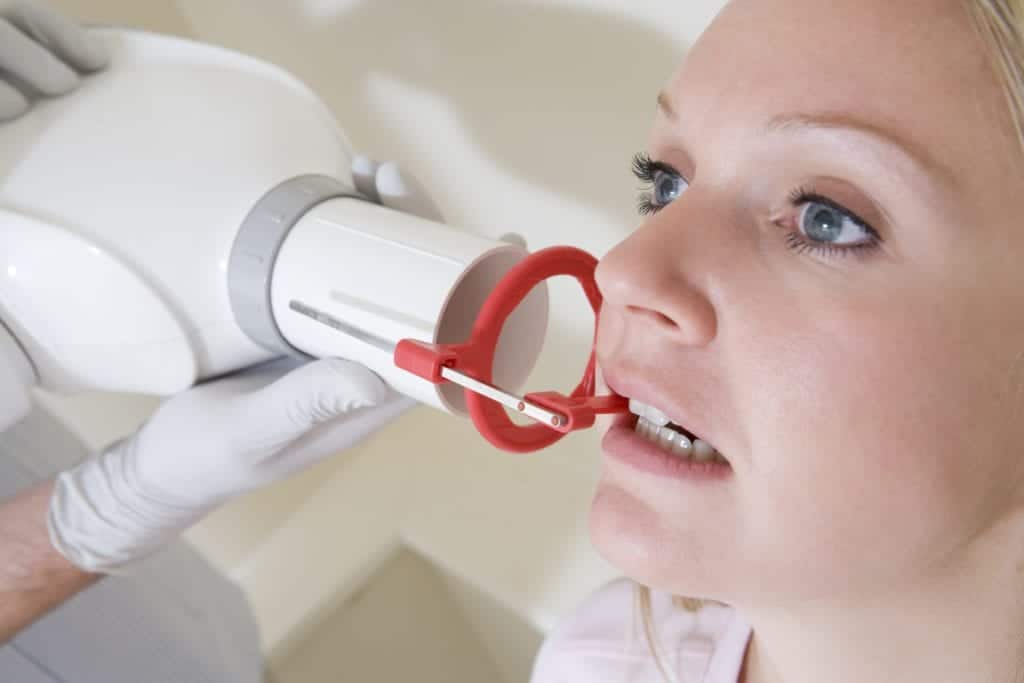

Dental x-rays are taken during your dental appointment in order to evaluate the underlying structures. They provide important diagnostic information about your jawbones, possible wisdom teeth, and cavities that may not be noticeable during an exam. Dental x-rays also help general dentists determine the type and severity of malocclusion, as well as how it is affecting the jaw joint.

An important part of your dental appointment is discussing your medical history and list of current medications with your dentist. This is because oral and overall health are closely related and can directly affect one another. For example, pregnant women or people with diabetes may be at an increased risk for gum disease, while people with acid reflux may have significant enamel wear. By discussing your medical history, your general dentist can determine what type of preventive dental treatment is best for you.

As your dentist evaluates your teeth and gums, they may offer advice on your dental hygiene routine. Just by looking at your teeth and gums, dentists can tell if you floss regularly or just before your appointment. They can also tell if you brush regularly, or if you brush too hard. If they notice anything, they may provide education on the proper brushing and flossing techniques. They may also offer advice on which toothpaste you should be using, if you need mouthwash, and what type of toothbrush is best for you.
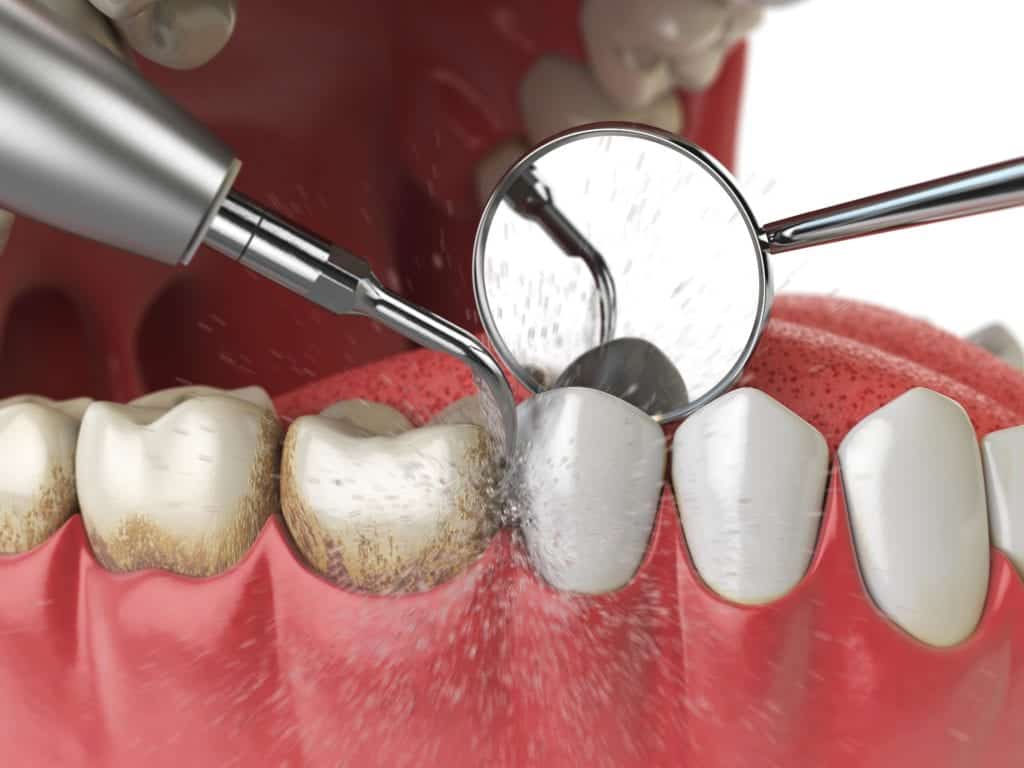

Before your dental appointment ends, you will have your teeth professionally cleaned to remove excess plaque and tartar. Professional teeth cleanings are an extremely beneficial preventative dental treatment because they reduce the risk of both tooth decay and gum disease. This is because the bacteria responsible for these issues resides in dental plaque. By removing the dental plaque, the amount of bacteria is significantly reduced, which reduces the risk as well. During a teeth cleaning, a special tool called a scaler is used to scrape off plaque and tartar from the entire surface of the teeth. Then the teeth are brushed with a gritty toothpaste, flossed, and rinsed.

The final thing your dentist does at your dental appointment is to apply fluoride to the tooth enamel after the enamel has been cleaned. This can be accomplished with a fluoride polish or rinse. Fluoride has been proven to strengthen tooth enamel, making it more resistant to the acids produced by bacteria that cause tooth decay. It also makes it harder for plaque to attach to the tooth enamel. Since dental plaque is the ideal environment for the bacteria that cause tooth decay, less plaque on the tooth enamel means less chance of tooth decay.
As you can see, your general dentist does many important things during your dental appointment. Many people don’t realize just how many things their dentist does because their dentist’s are so efficient. Because general dentists do so much during your dental appointment, these semi-annual appointments are highly beneficial to your oral health. How long has it been since your last dental appointment?
Missed part 1? Click Here!

Dr. Dennis Laurich has been practicing dentistry for over 40 years. He received his DDS degree from the University of Michigan Dental School and regularly attends oral health care conventions to continue his dental education. This allows him to treat patients with the leading dental technology and methodologies. Additionally, he is a member of the American Dental Association, Michigan Dental Association, and the Detroit District Dental Society.
The phrase “root canal” has a predominantly negative connotation among many people. This is largely due to the horror stories about root canals of the past, as well as negative Hollywood depictions. The truth of the matter is that despite their negative reputation, root canals are actually an important restorative procedure. In fact, when the pulp layer of the tooth becomes infected, root canals are the only treatment that can save the tooth.
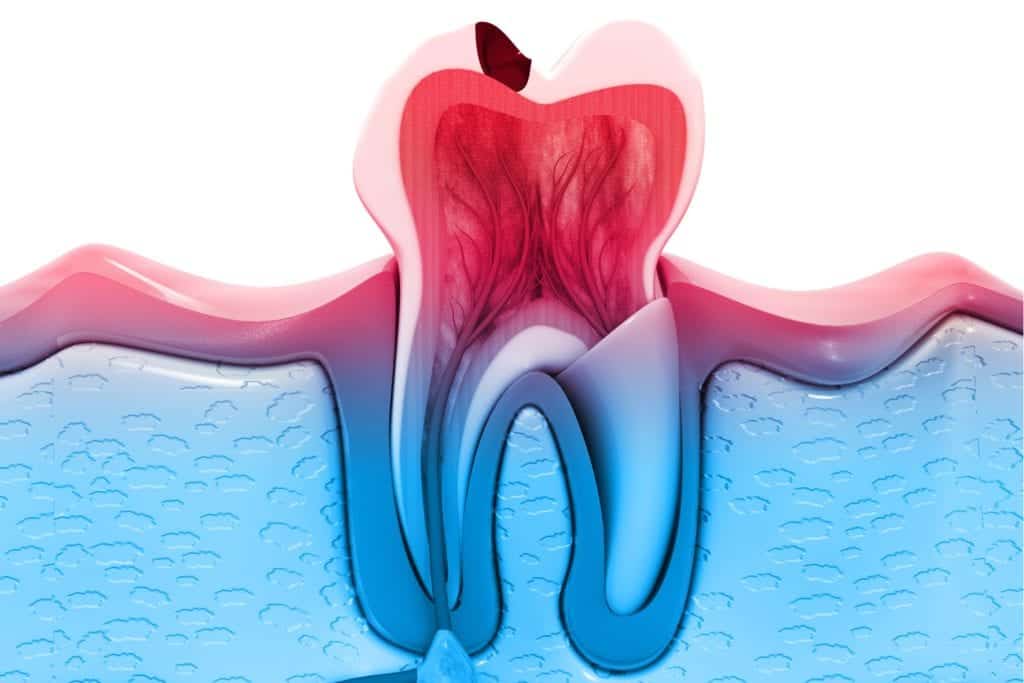
Dental pulp is the innermost layer of your tooth and is composed of blood vessels and nerves. If tooth decay erodes both the enamel and dentin layers to enter the pulp chamber, this causes the pulp to become infected. Unfortunately once the pulp is infected, it is unable to heal itself and the infection will continue to spread if not treated. Pulp infections can lead to a tooth root abscess, infection of the surrounding teeth, and eventual tooth loss or need for extraction.
During a root canal, this decayed and infected tissue is removed from the pulp chamber and root canals. Thus, root canals prevent abscesses, further infection, and tooth loss. Simply stated, root canals save your teeth from a much worse fate. However, as with most dental treatments, the sooner you receive treatment the better. Here are three key signs that you may need a root canal:

According to the American Endodontic Association, pain is the most common symptom signaling the need for a root canal. This isn’t to say that just because your tooth hurts, you need a root canal. There are different reasons for tooth pain and not all of them require a root canal. Generally pain that could indicate the need for a root canal is mild or intense in severity, may decrease or increase as the day goes on, or may only become more severe when biting with the affected tooth. Additionally, you may experience tooth sensitivity to hot and cold temperatures that continues even when the source has been removed.
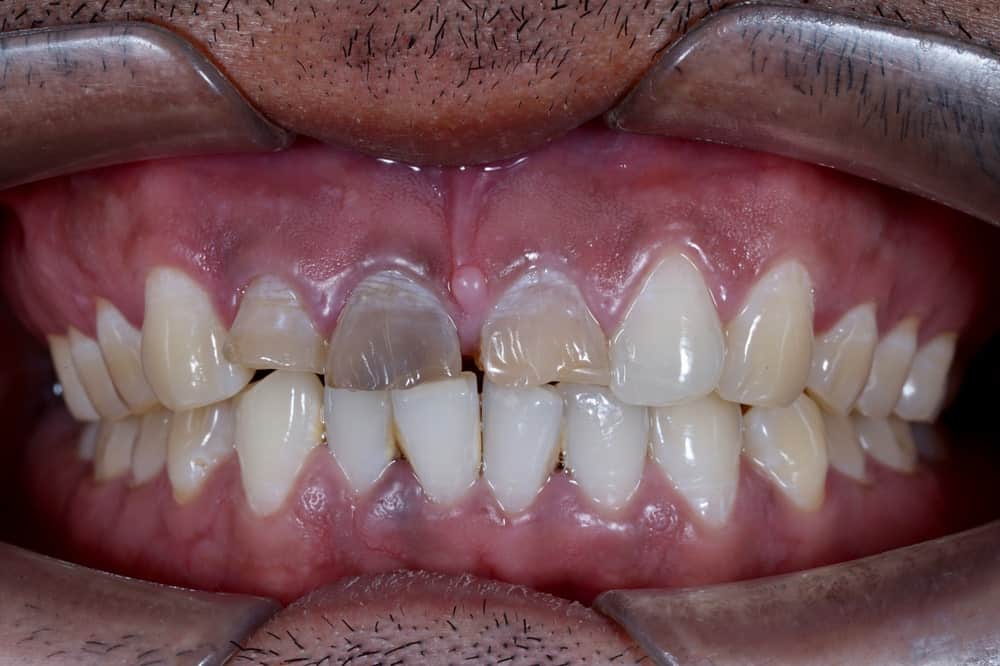

Another possible sign that you may need a root canal is discoloration of the affected tooth. This discoloration is generally described as a darkening of the tooth. However, the affected tooth can be a darker yellow than the others, light brown, grey, or black. Teeth can become discolored as a result of the dental pulp decaying and dying. If you notice a single tooth changing color, you may need a root canal to restore the tooth.

The final key sign that you may need a root canal are symptoms in the surrounding tissues. In most cases, you may experience pain, tenderness, or swelling in the gums. You may even notice a discharge or a pimple along the gum line. Additionally, you may also experience pain that is deep in your jaw bones rather than simply in your tooth.
Tooth Pain and discoloration, as well as symptoms in the surrounding tissues are three key signs that you may need a root canal. Ultimately, however, only a general dentist can diagnose a pulp infection and the need for a root canal. For the best treatment outcomes, and to relieve any discomfort, timely dental treatment is recommended. If you notice these signs, it may be time for a visit to your local dentist office.

Dr. Dennis Laurich has been practicing dentistry for over 40 years. He received his DDS degree from the University of Michigan Dental School and regularly attends oral health care conventions to continue his dental education. This allows him to treat patients with the leading dental technology and methodologies. Additionally, he is a member of the American Dental Association, Michigan Dental Association, and the Detroit District Dental Society.
When you stumble, fall, and sprain an ankle, you go to the emergency room for help. But, when you stumble, fall, and chip a tooth, where do you go then? Fact is, dental emergencies can occur just as unexpectedly as other types of emergencies. In most cases, dental emergencies call for a trip to your local dentist’s office for emergency dental care. Most emergency dental offices set aside time in their schedule for dental emergencies, and some even offer after hours care.
So, how do you know if you need emergency dental care or simply a dental appointment? To help answer this question, here are five types of dental emergencies:

Tooth pain that comes on suddenly, is severe, or continues to get worse can be a symptom of a larger problem that needs to be quickly taken care of. Tooth pain can be the result of something becoming lodged between two teeth or it can be a sign of a pulp infection. When experiencing tooth pain, you should floss your teeth in an attempt to dislodge any debris that may be stuck. If something does appear to be stuck, never use sharp objects to remove it. With any kind of tooth pain, you should schedule an appointment with your dentist, however severe, sudden, or persisting pain may require an emergency dental appointment.


Although enamel is one of the strongest substances in the human body, it is still susceptible to damage. The most common forms of tooth damage are chips and cracks in the enamel. Damaged teeth can be the result of an accident, impact, biting down on hard objects, or using teeth for other functions besides chewing and biting. Teeth that have been weakened by decay are especially prone to becoming cracked or chipped. If a tooth has become chipped, it is important to locate any fragments and preserve them in a cloth soaked with milk or water until your emergency dental appointment.

Some accidents can cause teeth to either become loose or get knocked out of the mouth entirely. For the best treatment outcomes, both cases call for immediate emergency dental care. With a loose tooth, gently bite down to hold the tooth in place until you can be seen by an emergency dentist. With teeth that have been knocked out, it is important to locate the tooth and handle it only by its crown. The crown is the part of the tooth that is normally visible above the gum line. Any tissue lost with the tooth should be preserved and the tooth should be rinsed. While waiting to see an emergency dentist, the tooth can either be returned to its socket and gently bitten down on to hold it in place, or it can be stored in a glass of milk or water.


Oral soft tissues such as the gums, tongue, cheeks, and lips can be affected by dental emergencies such as lacerations, tears, and punctures. Depending on the location and type of soft tissue injury, your emergency dentist may ask to see you or may refer you to your local emergency room. In the meantime, it is important to flush the area with warm water and use firm pressure to stop any bleeding.

In some cases, a dental emergency can simply be a dental restoration that has become loose or that has fallen off entirely. For permanent restorations, you will need to schedule an emergency dental appointment and bring your restoration. If a temporary restoration is lost, it can usually be held in place by Vaseline, chapstick, or denture adhesive. Even temporary restorations need to be replaced by an emergency dentist to ensure the proper amount of space is preserved for the permanent restoration.
Toothaches, damaged teeth, loose or knocked out teeth, soft tissue trauma, and missing dental restorations are all different types of dental emergencies that often occur. When such emergencies happen, it is important to call your emergency dentists as soon as possible to set up a time for emergency dental care. With most dental emergencies, the sooner you call, the sooner your symptoms can be relieved and the better the treatment outcome.

Dr. Dennis Laurich has been practicing dentistry for over 40 years. He received his DDS degree from the University of Michigan Dental School and regularly attends oral health care conventions to continue his dental education. This allows him to treat patients with the leading dental technology and methodologies. Additionally, he is a member of the American Dental Association, Michigan Dental Association, and the Detroit District Dental Society.
Do you brush your teeth twice a day? Do you floss at least once a day? Do you see your dentist regularly every six months for your dental checkup and cleaning? While many people assume that daily dental hygiene is enough to maintain their oral health, this is not always the case. In addition to having a great daily dental routine, you also need to make it a routine to visit your general dentist every six months. You may be wondering, why is it so important to visit the dentist twice a year? Semi-annual dental appointments are important because of all the things your dentist does during them. To show you their importance, here are ten things your general dentist does during your appointment:
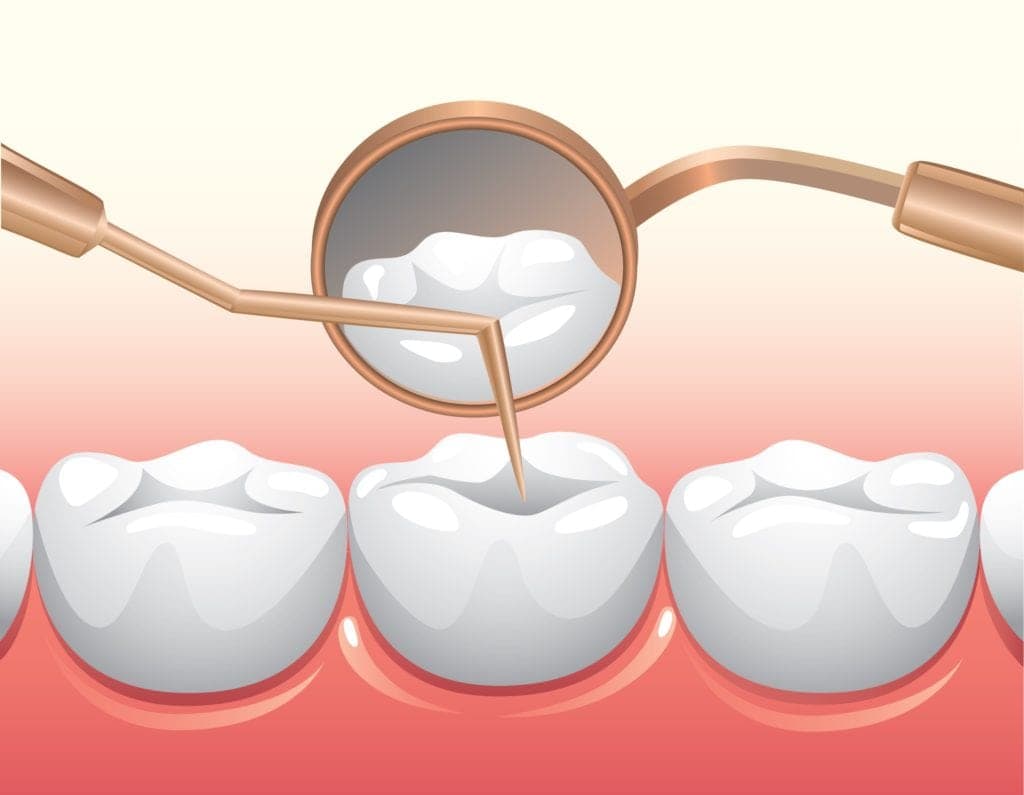

First things first, your general dentist will carefully examine your teeth for signs of decay, damage, or premature wear. They may use a special dental probe and a dental mirror to the all the different angles of the teeth. In some cases, they may test the teeth for signs of pain or sensitivity.

Once the teeth have been examined, the next thing your dentist will likely evaluate is the gums. Healthy gums should be a coral pink color, so your dentist will pay close attention to the color of your gums. Additionally, they may also poke at the gum to see if they bleed. Gums that bleed easily can be a sign of gum disease. Finally, your gum pocket will be measured with a special tool to check for signs of gum recession.

Next, your general dentist will examine your bite for any signs of malocclusion. Different types of Malocclusions can include an overbite, underbite, cross bite, or open bite. Depending on the type and severity of malocclusion, your dentist may recommend orthodontic treatment to properly align your bite. After checking your bite, your dentist may ask you to open and close so they can make sure your jaw is functioning properly.
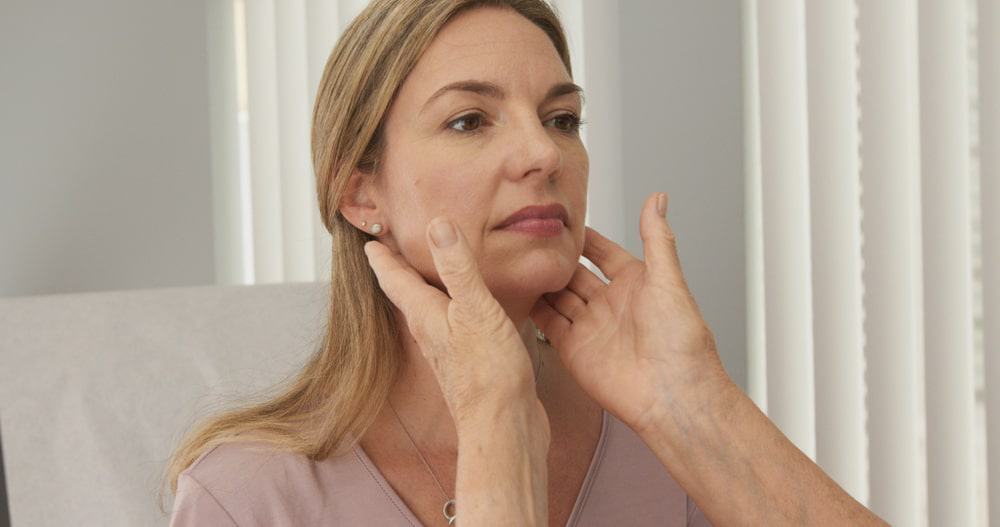

Nowadays, many general dentists screen patients for oral cancer during their dental appointments. This is because oral cancer is on the rise, but has a good outlook when diagnosed and treated early. To screen for oral cancer, your doctor will evaluate the soft tissues of your mouth such as your lips, inner cheeks, gums, tongue, hard and soft palates, and your tonsils. If your general dentist notices any changes in coloration or texture that look suspicious, they will refer you to your primary physician for further testing.

While your general dentist is examining your teeth, gums, jaws, and soft tissues of the mouth, they are also inadvertently smelling your breath. Believe it or not, the smell of your breath can be a potential symptom that dentists use for diagnosis. If your breath has an odor, it could indicate gum disease, tooth decay, infection, or dry mouth. Strong breath odor may also be caused by medical conditions such as bronchitis, pneumonia, sinus infections, acid reflux, kidney problems, liver problems, or diabetes.
For more information on the things your general dentist does during your appointment, see part II.

Dr. Dennis Laurich has been practicing dentistry for over 40 years. He received his DDS degree from the University of Michigan Dental School and regularly attends oral health care conventions to continue his dental education. This allows him to treat patients with the leading dental technology and methodologies. Additionally, he is a member of the American Dental Association, Michigan Dental Association, and the Detroit District Dental Society.
Long ago in our evolutionary past, humans used to regularly eat foliage, roots, nuts, and meat. At that time, human jaws were larger in order to effectively grind up plant material. Wisdom teeth, or the third set of molars, were an essential structure to process this type of diet. Over time, however, humans evolved to using tools to cut up their food, as well as cooking methods to make food softer. As a result, the human jaw gradually became smaller and wisdom teeth were no longer an essential structure.
Nowadays, wisdom teeth are classified as a vestigial, or functionless, structure. They serve no purpose and are simple reminders of our evolutionary past. Furthermore, wisdom teeth no longer fit into the mouth the way they once did. Because of this, they often are impacted and need to be extracted. To learn more about what impaction is, see “4 Types of Wisdom Teeth Impactions”. To determine if wisdom teeth are impacted, look for these three signs:
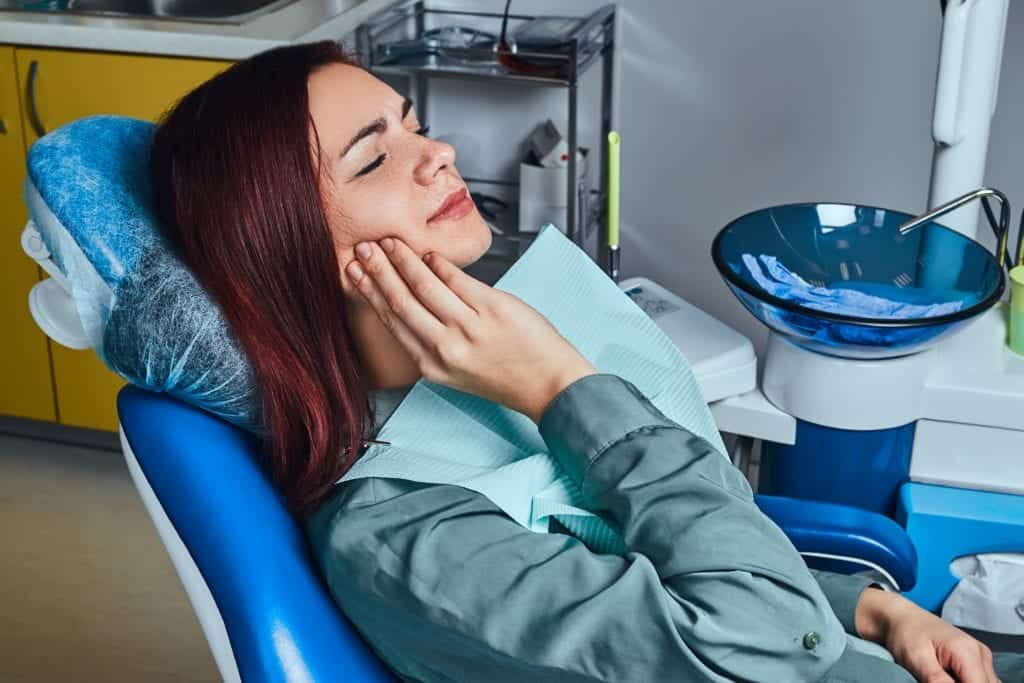

Pain towards the back of the mouth or in the jaw is a pretty good indication that you may have a wisdom tooth impaction. Depending on the type of impaction, pain may be felt in the gums, the surrounding teeth, while chewing, or in all of the aforementioned. Pain from wisdom teeth can be caused by crooked wisdom teeth or by an infection caused by an impacted wisdom tooth. Wisdom teeth pain may start gradually or it may come on suddenly.

Another key sign of an impacted wisdom tooth is swelling. In most cases, swelling can occur in the gums around the affected tooth. In some cases, swelling may also be felt in the jaw. If the gums are swollen, they may also appear red or may bleed easily. You may also experience swelling in the lymph nodes or even a sore throat.

The final sign of impacted wisdom teeth are a foul odor or taste that permeates through the mouth. In most cases, foul odor and taste are caused by pericoronitis. Pericoronitis is an infection that occurs near impacted wisdom teeth. In addition to foul odor or taste, there may be gum discharge, jaw swelling, muscle spasms, or swollen lymph nodes.
While pain, swelling, and a foul odor or taste are three telltale signs of an impacted wisdom tooth, it is important to note that not everyone experiences these same exact symptoms. Some people may never know they have impacted wisdom teeth until they receive a dental x-ray at their routine dental exam, while others may be able to notice pain or swelling as soon as their wisdom teeth begin to erupt.
Nevertheless, pain, swelling, and a foul odor or taste are three signs of an impacted wisdom tooth. If you are between 17 & 25 and you begin experiencing these symptoms, it is very likely that you could have an impacted wisdom tooth. In some cases, an impacted wisdom tooth may eventually be able to erupt properly, but in most cases dental intervention of some kind is necessary to alleviate symptoms, prevent infection, and preserve your oral health.

Dr. Dennis Laurich has been practicing dentistry for over 40 years. He received his DDS degree from the University of Michigan Dental School and regularly attends oral health care conventions to continue his dental education. This allows him to treat patients with the leading dental technology and methodologies. Additionally, he is a member of the American Dental Association, Michigan Dental Association, and the Detroit District Dental Society.
According to the American College of Prosthodontics, about 120 million Americans are currently missing at least one tooth. Missing one or more teeth is known as partial edentulism, while missing all your teeth is known simply as edentulism. Currently about 36 million Americans are edentulous.
Teeth normally fall out as a result of severe tooth decay, gum disease, or trauma. In some cases, teeth may also be extracted by a general dentist to relieve painful symptoms, localize an infection, or to prevent damage to the surrounding teeth. Once a tooth has fallen out or been removed, an empty tooth socket is left behind.
At this point, dental patients often find themselves wondering what to do next. Some people may be tempted to simply allow the site to heal and take no further action. However, ask any general dentist and they will tell you that replacing a missing tooth or teeth is highly important to your oral health. In fact, they will likely tell you to replace missing teeth for these five reasons:
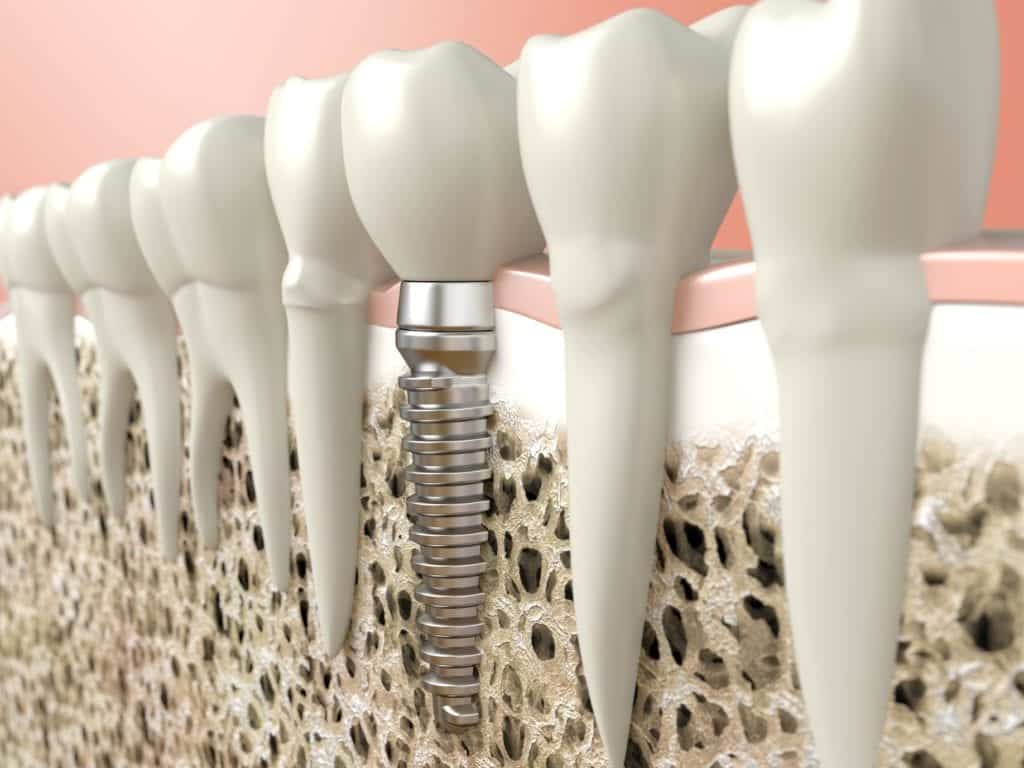

When a tooth is lost, the jawbone is no longer being stimulated by the force of chewing. Ultimately, this results in the body absorbing the bone tissue from the jawbone to be used elsewhere in the body. This is known as resorption and it begins about six months after a tooth is lost. Over time, bone loss can cause the shape of your face to completely change. To prevent this from happening, replacing your missing teeth with dental implants are recommended. Out of all the restoration methods for replacing missing teeth, only dental implants can prevent bone loss.

In order to maintain an even bite, the entire upper and lower arch must be full of teeth. If teeth are missing, then there are gaps in between teeth. This will eventually lead to the teeth shifting to fill in the gap. Once the teeth have shifted, the way the upper arch meets the lower arch is significantly affected. Having an uneven bite causes a range of problems that affect the teeth and jaw. Replacing missing teeth eliminates the gap and prevents the teeth from shifting so that the bite remains as it was before the tooth was lost.

Just as the gaps left by missing teeth can cause the teeth next to them to shift and fill the gap, this can also happen with opposing teeth. For example, when a tooth on the bottom arch is lost, the tooth that is directly above it may grow longer to fill the opposing gap. This usually occurs because the absence of a tooth means there is no opposing force to maintain the growth of the opposing tooth. Restoring the missing tooth allows the opposing tooth to be exposed to the force of the dental prosthesis like it would have with the natural tooth.

Besides smiling, the main functions of your teeth are to bite and grind food, as well as to help you speak. However, to carry out these functions fully, all the teeth need to be present. When teeth are missing, it negatively affects your ability to bite and chew certain foods that are hard or chewy. Not only that, but the gaps left by missing teeth change the way air flows during speech and can even alter the way you speak. If your teeth begin to move, this can also change the way you speak and can even lead to permanent speech impairment. Replacing missing teeth ensures that you will still be able to carry out the functions your teeth are essential for.
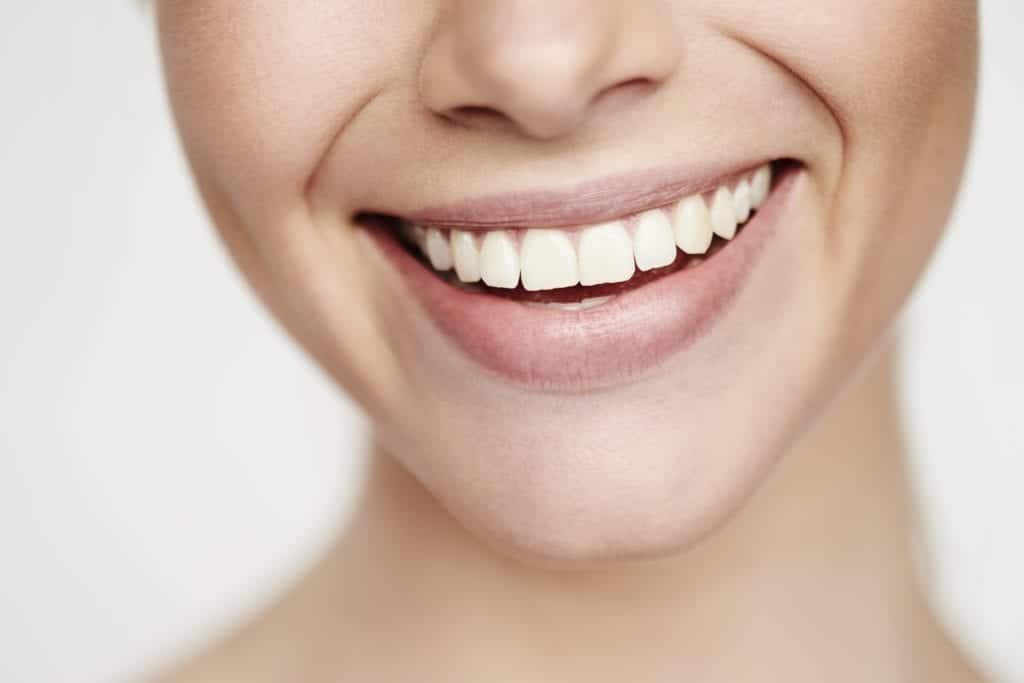

Last, but not always least, you should replace your missing teeth to improve the visual aesthetics of your smile. Smiles with a missing tooth or multiple missing teeth do not have the same visual appeal as those with a full set of teeth. Having a nice smile has been proven to have many social, professional, and emotional benefits, therefore you should also replace missing teeth to improve the look of your smile.
Overall, replacing missing teeth is highly important to maintain the appearance and function of your smile. Replacing missing teeth can prevent serious dental issues in the future, while preserving oral functioning and improving your smile. Replacing missing teeth with dental implants can even prevent bone loss. With all these reasons, replacing missing teeth is almost a no brainer.

Dr. Dennis Laurich has been practicing dentistry for over 40 years. He received his DDS degree from the University of Michigan Dental School and regularly attends oral health care conventions to continue his dental education. This allows him to treat patients with the leading dental technology and methodologies. Additionally, he is a member of the American Dental Association, Michigan Dental Association, and the Detroit District Dental Society.
Are your teeth crooked, overcrowded, or unevenly spaced? Do you wish they could be properly aligned? Have you been putting off orthodontic treatment due to the hassle of metal braces? If this sounds like you, then Invisalign may be the perfect orthodontic treatment for you.
Invisalign is a modern orthodontic method that was developed back in 1997. After its introduction in 1999, Invisalign has taken off in the dental world and has provided over 2.4 million satisfied patients with beautiful, straight smiles.
Unlike traditional metal braces, Invisalign is free of metal, brackets, and wires. Instead, a removable orthodontic appliance is used to manipulate the teeth into proper alignment. Intrigued yet? Well, here are five important facts to know about Invisalign treatment.
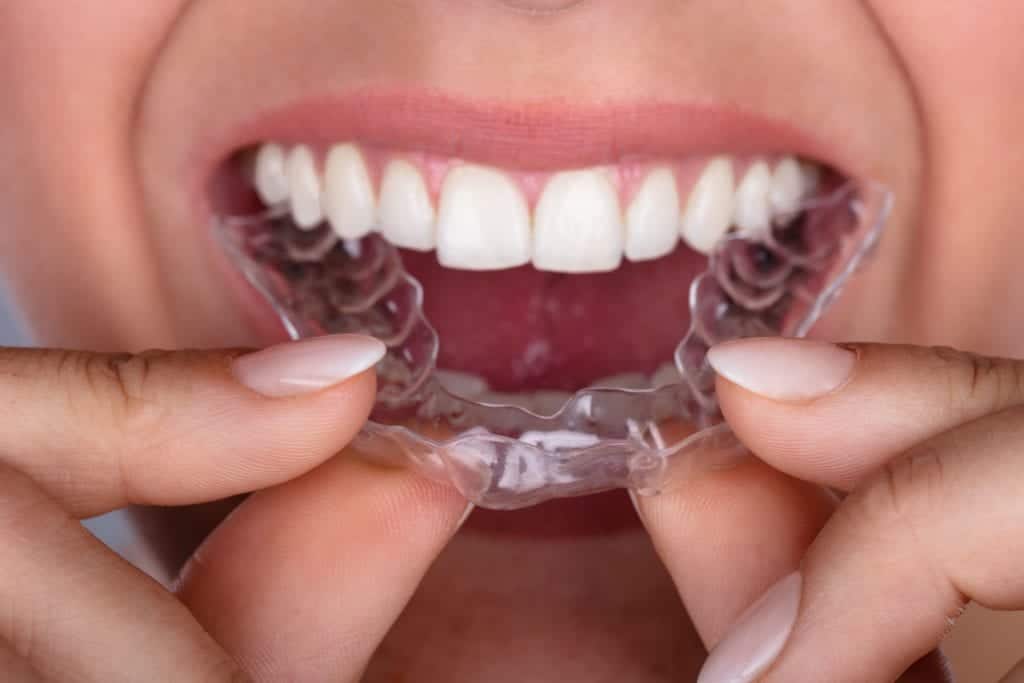

Invisalign treatment uses clear aligners as its removable orthodontic appliance. These aligners are made from Invisalign’s patented SmartTrack® material. This thin but durable material allows the aligners to fit perfectly within the various textures of the teeth. The precise fit of Invisalign aligners combined with their thin and clear frame makes Invisalign the most discreet orthodontic treatment. For this reason, they are a popular choice for working professionals.

Invisalign treatment can address a number of alignment and bite issues all at once. It works well to correct alignment issues such as overcrowding, overlapping teeth, crooked teeth, or teeth with gaps between them. It can also correct bite issues such as open bites, crossbites, overbites, and underbites.

In addition to being a versatile treatment, Invisalign is also the most flexible orthodontic treatment option. By using removable aligners, Invisalign ensures that your diet and oral health routine will not be affected. Furthermore, there are fewer dental visits with Invisalign since the aligners can be switched by you without the dentist. Not to mention, these limited dental visits also take less time because few adjustments need to be made.

Although Invisalign uses an entirely different orthodontic appliance to move the teeth, the mechanism is similar to that of traditional metal braces. Both approaches apply gradual pressure to the teeth, causing them to shift over time. While braces use brackets and an arch wire, Invisalign uses their aligners. Both methods have been found to produce similar results and have similar post-treatment retention rates.


Contrary to popular belief, the cost of Invisalign is about the same as the cost of traditional metal braces. The total cost of your Invisalign treatment will depend on your individual case. However, there are various options available to offset the total cost including dental insurance and monthly payment plans. While many dental insurance plans cover Invisalign treatment, the amount they cover can vary by your dental insurance plan.
As you can see, Invisalign is a modern approach to orthodontic treatment that is discreet, versatile, flexible, effective, and affordable. For these reasons, many dental patients are more than satisfied with Invisalign treatment and their resulting smiles. This explains why Invisalign has been used by over 2.4 million people. Are you ready to join them?

Dr. Dennis Laurich has been practicing dentistry for over 40 years. He received his DDS degree from the University of Michigan Dental School and regularly attends oral health care conventions to continue his dental education. This allows him to treat patients with the leading dental technology and methodologies. Additionally, he is a member of the American Dental Association, Michigan Dental Association, and the Detroit District Dental Society.